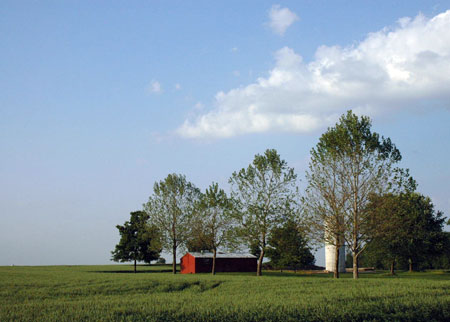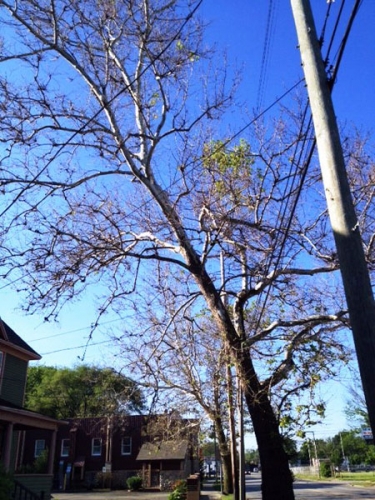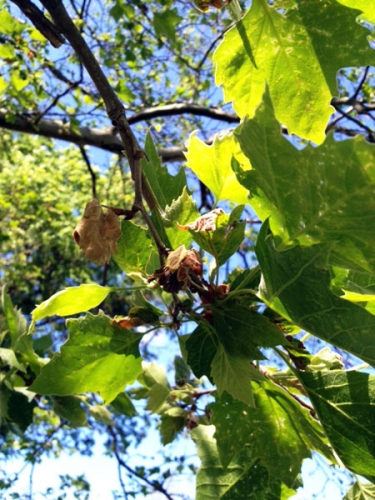Landscape trees and shrubs trying to make a comeback from late frost damage
Longer-term impacts of frost damage to landscape trees and shrubs may depend on spring and early summer weather.
This season’s unprecedented early warm-up, followed by several frosts, resulted in widespread late frost damage on a wide range of landscape trees and shrubs. In many cases, damaged plants have already resumed growth and are well on their way to recovering. For other plants, such as sycamore trees, the recovery may take a while.
On better sites, trees have resumed producing new leaves, typically recovering from the top downward (Photo 1). In all likelihood, these trees will appear normal by mid-summer. On roadsides and other stressful sites, however, the recovery has been slower (Photo 2).

Photo 1. Leaf recovery from the top down. Photo credit: Bert
Cregg, MSU

Photo 2. Severity of stress on roadside tree.
Photo credit:
Jeanne Himmelein, MSUE
For plants that are slowly coming back from freeze damage, the longer-term prognosis may depend on upcoming weather conditions. If temperatures remain above-average and rainfall is inadequate, trees will be under stress and re-flushing will be delayed or incomplete. Poor crown development could set the stage for poor vigor of these trees going into the fall and winter. If weather patterns change, on the other hand, and conditions turn cool and wet, we could see an increase in certain diseases since the late frost damage at the end of shoot tips could provide an entry point for infection (for example, bacterial blight of lilacs).

Photo 3. Close-up of a second flush with first leaves dried
up.
Photo credit: Jeanne Himmelein, MSUE
From a tree management perspective, the warm, dry scenario is probably easier to deal with than the cool, wet pattern, assuming that trees can be irrigated. A thorough soaking once per week, being careful not to overwater, can reduce tree water stress. For cool, wet conditions, plant sanitation (pruning off damaged and diseased shoots) will become important to reduce infection points and sources of inoculum for re-infection.
Dr. Cregg’s work is funded in part by MSU’s AgBioResearch.



 Print
Print Email
Email




